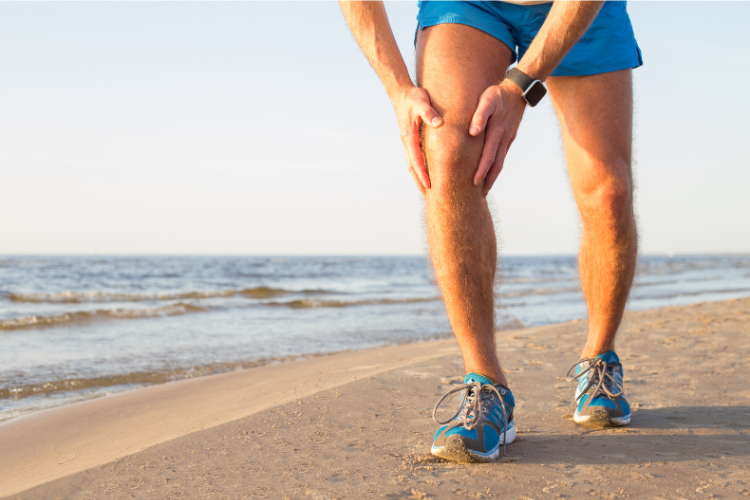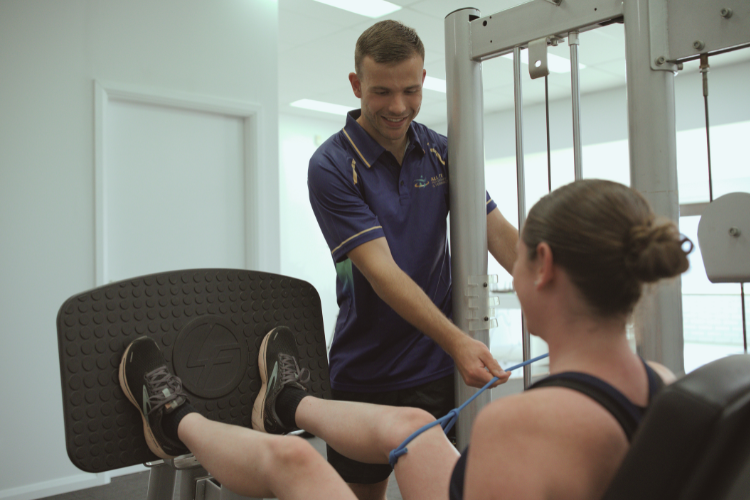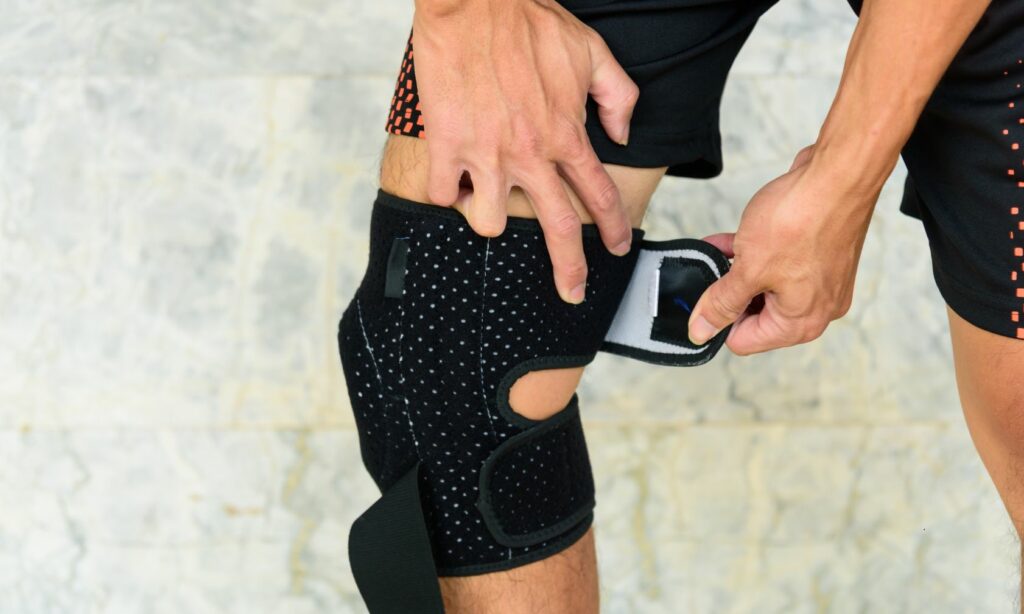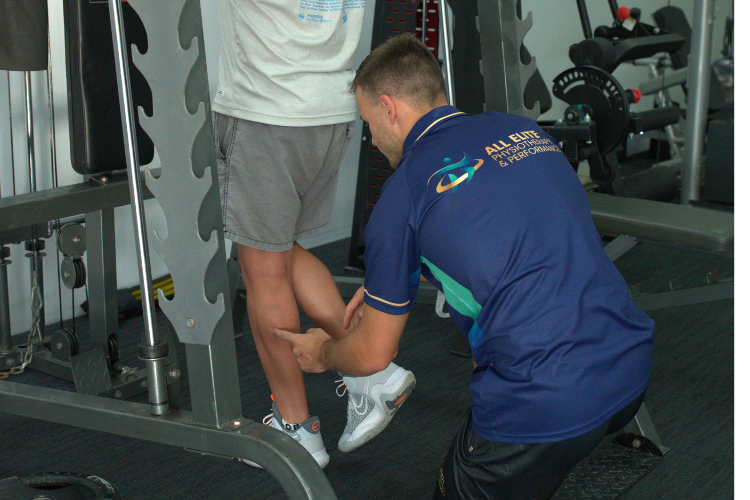ACL Injuries: Causes, Symptoms, Treatment, and Prevention
Anterior Cruciate Ligament (ACL) injuries are among the most common and serious injuries in sports. The ACL is a crucial ligament in the knee, providing stability and preventing excessive forward movement of the tibia relative to the femur.
Understanding the causes, symptoms, treatment options, and preventive measures is essential for athletes, coaches, and anyone involved in physical activities.
Anatomy and Function of the ACL
The knee joint is composed of bones, ligaments, tendons, and cartilage. The ACL is one of four major ligaments in the knee, connecting the femur (thigh bone) to the tibia (shin bone). It is situated diagonally in the middle of the knee and is responsible for:
- Stabilising the knee joint.
- Preventing the tibia from sliding out in front of the femur.
- Providing rotational stability to the knee.
Causes of ACL Injuries
ACL injuries typically occur during activities that involve sudden stops, jumps, or changes in direction. Common causes include:
- Pivoting or cutting movements: Quickly changing direction while running.
- Landing awkwardly from a jump: Landing with an extended knee or off-balance.
- Sudden stops: Abruptly halting forward motion.
- Direct collision: Receiving a direct blow to the knee, often seen in contact sports like football or rugby.
These movements can place excessive stress on the ACL, leading to a tear or rupture. Sports such as soccer, basketball, skiing, and gymnastics have higher incidences of ACL injuries due to their dynamic nature.
Symptoms of an ACL Injury

An ACL injury can manifest through various symptoms, which can range in severity. Common signs include:
- A loud "pop" sound: Many individuals report hearing or feeling a pop at the time of injury.
- Severe pain: Immediate and intense pain in the knee.
- Swelling: Rapid swelling within a few hours due to bleeding within the joint.
- Instability: Feeling as though the knee is "giving way" or unable to support weight.
- Loss of range of motion: Difficulty fully extending or bending the knee.
Diagnosis
Diagnosing an ACL injury involves a combination of physical examinations and imaging tests:
- Physical examination: A skilled physiotherapist will check for swelling, tenderness, and range of motion. Specific tests, like the Lachman test or the pivot-shift test, help assess the integrity of the ACL.
- Imaging tests: MRI (Magnetic Resonance Imaging) is commonly used to confirm an ACL tear and check for additional injuries to other knee structures such as the meniscus, cartilage, or other ligaments.
Treatment Options

Treatment for ACL injuries can vary depending on the severity of the injury, the patient's activity level, and their overall health. Options include both surgical and non-surgical approaches.
Non-Surgical Treatment
Non-surgical treatment may be appropriate for athletic individuals with partial tears, those not wanting to return to sport or high level activity, or those that fit within certain criteria for a bracing protocol. Approaches include:
- Rest and ice: Reducing activity and applying ice to manage pain and swelling.
- Physiotherapy and Strength training: Exercises to strengthen the muscles around the knee, improve flexibility, and restore function.
- Bracing protocols: There are a few bracing protocols currently out there having some great effects, including having complete healing of the ACL without any surgery. The most promising is the Cross Bracing Protocol. With this protocol even elite level athletes are returning to sport without the need for surgery.
Surgical Treatment
Surgery is often recommended for athletic individuals or those experiencing significant instability. The most common surgical procedure for ACL injuries is ACL reconstruction:
- ACL Reconstruction: The torn ligament is replaced with a graft, usually taken from the patient’s own patellar tendon, hamstring tendon, quad tendon or a donor tissue. The surgery is typically performed arthroscopically, which involves small incisions and a camera to guide the procedure.
Post-surgery rehabilitation is crucial and involves 6-12 months of physiotherapy to regain strength, stability, and function in the knee.
Rehabilitation and Recovery

Rehabilitation is a vital component of both non-surgical and post-surgical treatment plans. The goals of rehabilitation include: It is generally broken down into 5 stages:
1. Protection phase
The focus of this stage is to allow for tissue healing and begin some activation of muscles. This lasts up to 6 weeks usually (1.5months) .
2. Load Introduction
The main focus of this phase is to introduce some extra load and lifting patterns that will be essential for rehabilitation. This phase usually lasts up to 8 weeks (2 months) .
3. Strength Accumulation
The main focus of this phase is to rebuild your strength to a maximum and return to run. This phase lasts up to 12 weeks (3 months)
4. Training Integration
This phase has a specific focus on power retraining, and begins integration back to sports specific skills. This phase can last up to 12 weeks (3 months)
5. Return to performance
The main focus of this returning to play and returning to full performance. This phase can again last up to 12 weeks (3 months), when talking about returning to your maximum performance.
Recovery time can vary but typically ranges from 6 to 12 months post-surgery, depending on the individual's progress and adherence to rehabilitation protocols.
Prevention of ACL Injuries

Preventing ACL injuries involves a combination of proper training, conditioning, and awareness. Strategies include:
- Strength training: Building strength in the muscles around the knee, especially the quadriceps and hamstrings.
- Plyometric exercises: Incorporating jump training to improve explosive power and control.
- Neuromuscular training: Focusing on exercises that enhance balance, coordination, and agility.
- Proper technique: Learning and maintaining proper techniques for jumping, landing, and changing direction.
- Proper rehabilitation: Studies have shown that having a guided rehabilitation program does reduce the risk of injury.
Additionally, implementing ACL injury prevention programs, especially for athletes in high-risk sports, can significantly reduce the incidence of these injuries.
Living with an ACL Injury
Living with an ACL injury can be challenging, especially for athletes and active individuals. However, with proper treatment and rehabilitation, most people can return to their previous levels of activity. Key aspects to consider include:
- Adherence to rehabilitation: Consistently following the prescribed rehabilitation program to ensure optimal recovery.
- Mental health: Addressing the psychological impact of the injury, as it can affect motivation and confidence. Support from healthcare professionals, coaches, and peers is essential.
- Long-term care: Maintaining a regular exercise routine and being mindful of knee health to prevent re-injury.
Conclusion
ACL injuries are significant and can have a considerable impact on an individual's physical activities and overall quality of life. Understanding the anatomy, causes, symptoms, and treatment options is essential for effective management and recovery.
With advancements in medical treatments and a focus on preventive measures, individuals can successfully navigate the challenges of an ACL injury and return to their active lifestyles.
For personalised care and expert guidance on managing ACL injuries, All Elite Physio and Performance offers comprehensive assessment and tailored treatment plans to help you recover and regain your peak performance. Contact us today to schedule an appointment and take the first step towards your recovery journey.
